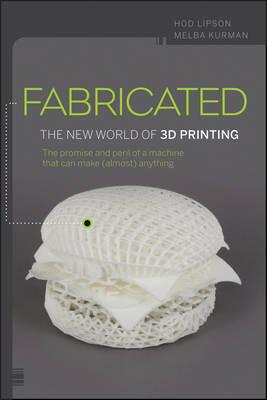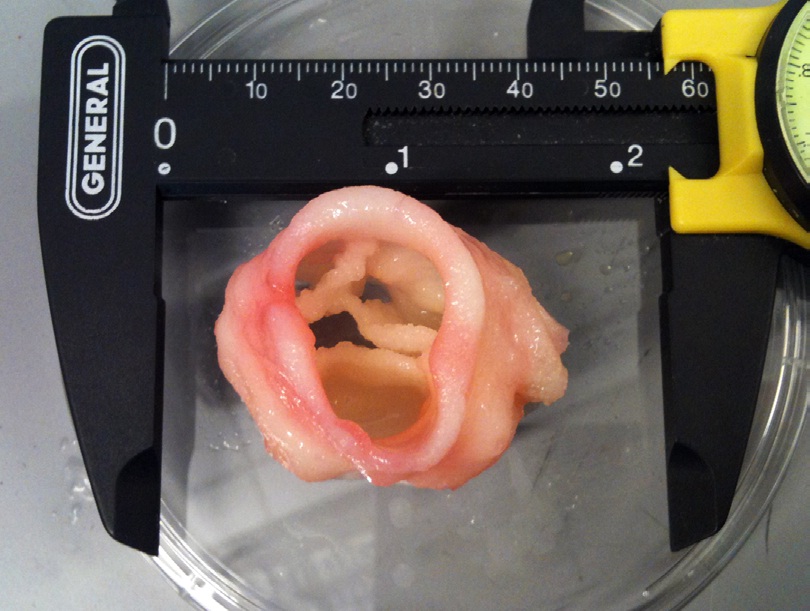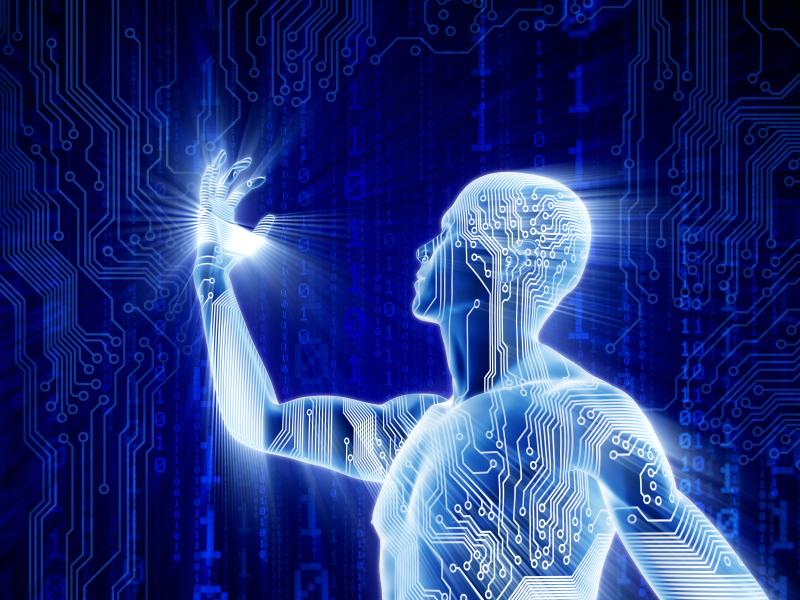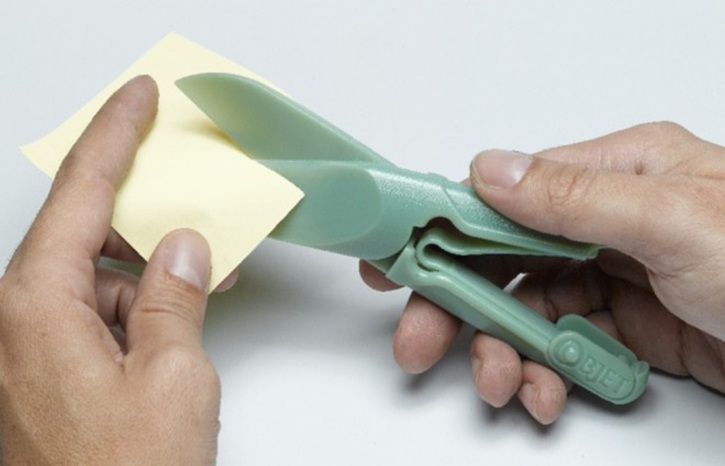Close your eyes and imagine the future. What’s transportation like? How about food preparation? Communication? How about shopping?
Science fiction writers have long allowed us glimpses of possible future worlds. From Star Trek to Minority Report, we are fascinated by the potential of technology.
WAIT UNTIL YOU HEAR ABOUT THIS
One technology that has been around for decades but is only now starting to emerge in the public eye is the world of 3D printing. Science fiction fans, technologists and futurists may grasp this concept faster than most. And though I’m a student of futurists like Dan Burrus, and a frequent attendee of the Consumer Electronic Show, the reality of 3D printing is something my mind struggles to truly grasp.
Hod Lipson and Melba Kurman, leading experts on 3D printing, have written a new book Fabricated: The New World of 3D Printing. It’s all about “the promise and peril of a machine that can make (almost) anything.”
I recently had the opportunity to ask the authors about this new world and where we are headed.
3D PRINTING TODAY
This technology is already in use today. Give us a few examples of where it’s in use, but we may not even think about it.
Yes, 3D printed products do indeed lurk amongst us in our daily lives. Many people don’t realize that 3D printing technology is not new; in fact, 3D printing has been in use in engineering and manufacturing environments as a prototyping tool for decades. If you look around your office or your car, almost every product — your chair, stapler, eyeglass frame and car mirror — probably started their life as a 3D-printed prototype. What’s new is that in the past few years, an increasing number of everyday actual products — not just prototypes used in the product design process — are made using 3D printing.
The medical field has been one of the first industries to embrace 3D printed products. Most hearing aids these days are 3D printed so they fit exactly the shape of your inner ear. Invisalign™ orthodontic braces are 3D printed, which makes sense since a personal and customized fit is critical when it comes to dental work. Many dentists are 3D printing crowns. On the cutting edge, surgeons are experimenting with 3D printed titanium hip and jaw implants designed using medical scans. If you pair a 3D printer with an optical scanner or a medical image, you can make custom prosthetics more quickly and accurately.
In general, the more a product benefits from being customized or personalized, the more likely it will be made via 3D printing. Right now, 3D printing is too slow and too costly for mass production.
3-D printed artificial heart valve. Image courtesy of Jonathan Butcher, Cornell University
A MACHINE THAT CAN MAKE ALMOST ANYTHING
I was struck by this quote in your book: “The end of the 20th century was about information becoming digital. The 21st century is going to be about bringing the virtual world into closer alignment with the physical one.” Tell us more about that transition.
The virtual/digital convergence is a deep concept, and I’ll do my best to explain what we meant as briefly as possible.
Think back twenty years. Books and newspapers were stored, shared and consumed on paper or microfilm. Movies and music were just beginning to make the transition from analog to digital format, evolving from cassettes and VHS tapes to CD or DVD. Fast forward to today and now we have ebooks, online news and streaming on-demand digital media files.
It took just a decade or two for information and entertainment products to make the leap into the virtual, or digital, world. Digital media and information demonstrate that we’ve already crossed the bridge into one kind of “digital. ” However, we have yet to see their equivalent in the physical world.
Physical products, however, are going to take longer to morph from analog into digital. Today, physical objects could be described as “analog,” meaning they’re made from a continuous stream of non-discrete material. Also, physical objects are “analog” in that they aren’t programmable nor can they be easily duplicated or edited. The word “digital” has many different connotations in different contexts. To me, in the context of 3D printing and this book, digital matter would be programmable physical matter and digital materials made of tiny, discrete units called “voxels.”
Researchers are developing printers that use tiny building blocks called “voxels.” A voxel is the three-dimensional, physical equivalent of a pixel. A voxel could be a tiny, discrete piece of a solid material or a tiny device like a battery, microprocessor, senor or motor. 3D printers could rapidly assemble such discrete tiny building blocks into smart fabric, ready-made robot life forms, and machines that learn, respond, and think.
Voxels will enable us to 3D print materials that can be actively programmed to behave in specific ways. Printing voxels instead of molten streams of plastic will enable us to move from printing passive analog objects to printing complete working devices made of tiny voxels that contain wires, batteries, sensors and actuator materials.
The end of the 20th century was about information becoming digital. The 21st century is going to be about bringing the virtual world into closer alignment with the physical one.
Researchers are developing printers that use tiny building blocks called “voxels.” A voxel is the three-dimensional, physical equivalent of a pixel. A voxel could be a tiny, discrete piece of a solid material, or a tiny device like a battery, microprocessor, senor or motor. 3D printers could rapidly assemble such discrete tiny building blocks into smart fabric, ready-made robot life forms, and machines that learn, respond, and think.
Voxels will enable us to 3D print materials that can be actively programmed to behave in specific ways. We will move from printing passive parts to printing complete working devices that contain wires, batteries, sensors and actuator materials. This is one way 3D printing will enable us to enjoy the design freedoms and precision of the virtual world but in a physical context.
BENEFITS OF NIMBLE MANUFACTURING
You say that the potential exists for manufacturing to make things better, faster, and cheaper. Can you share just one example?
Traditional mass manufacturing requires upfront investment of money and time in order to make lots of identical products quickly and cheaply. 3D printing opens the door to making one-of-a-kind custom products that would normally be expensive and slow to make. In that sense, it opens the door to making good products quickly and cheaply.
Imagine, for example, prosthetic limbs: A one-size-fits-all mass-produced prosthetic is not as good as custom prosthetic, but a custom prosthetic is expensive and slow to make. Yet with 3D printing, custom prosthetics become economically viable.
HOW IT WORKS
Your book does an outstanding job of explaining the technology and how it works. If I met you on an elevator and asked, how would you describe how it works?
Imagine a traditional inkjet printer, one that deposits droplets of ink on a piece of paper to create a two-dimensional image. A 3D printer works similarly, but instead of droplets of ink, it sprays tiny droplets of plastic as guided by an electronic blueprint, or design file. The 3D “print head” gradually builds a physical object by spraying, extruding or solidifying raw material layer by layer. So when a 3D “print job” is complete, you end up with a real, usable plastic cup you can drink out of not just a printed picture of a plastic cup.
In practice, there are a dozen or so different types of 3D printers: Some jet droplets, some squeeze out pastes, and others fuse powders. But they all build the object by stacking layer upon layer.
Printing functional objects. These 3D-printed scissors work “out of the box” — no assembly or sharpening required.
FOOD
How this could work in the kitchen just made my head spin. Would you share just a brief example of how 3D printing can work in the kitchen? What is digital cuisine?
Digital cuisine is a fun concept we came up with when writing the book, and the name has sort of stuck. Digital cuisine is using a design file (not a recipe) to 3D print (not manually cook or bake) food. Unfortunately, you can’t go buy a 3D food printer yet, but if we had to gamble, our bet is that digital cuisine is going to be one of the first mainstream consumer applications of 3D printing.
Digital cuisine, or 3D food printing, will work like those automatic espresso machines you see in the airport lounge (or maybe you have one in your kitchen). Rather than popping in a pod of espresso to make a cup of coffee, you would pop a special food cartridge into your 3D printer. Perhaps to make a chocolate cake or pesto pasta.
A digital “recipe” (which could be emailed or downloaded) would guide the food printer by telling it what to do: where to place the material from the food cartridge, and exactly how much. At the very end of the printing process, your food printer would have a little built-in oven or hotplate that would provide the finishing steps — the cooking or baking. The result? A nice hot 3D printed meal.
Someday, we will use kitchen food printers to make an infinite variety of complex pastries that we can’t make today. People on special diets or with medical conditions will print custom meals whose carefully calibrated nutritional content is based on that person’s unique biometrics.
MEDICINE
Perhaps there is no greater discussion about this technology than in the medical world. How is 3D printing used today and what is possible in the years ahead?
As mentioned earlier, the medical industry has been one of the first to embrace custom-made 3D printed products. Today researchers are exploring a medical technique known as “bioprinting,” or printing living cells in a special hydrogel to fabricate precisely shaped, living tissue. We have already printed simple tissues like cartilage and bone in the lab. Researchers are developing techniques to print functioning “parts” such as heart valves and spinal disks. Someday, perhaps surgeons will be able to print entire functioning organs for people, designed especially for their unique body shape and blood type.
EVERYTHING IS BECOMING SCIENCE FICTION
That’s the title of Chapter One of the book, and you give several examples of how 3D fabricating could be used:
- A skin implant, tracking a diabetic’s blood sugar level, automatically adapts recipes to help digitally cook and custom-make your breakfast.
- Replacement organs are easily made, allowing for a new breed of cosmetic surgery as well as replacement joints and other organs.
- Construction is completely different as computers scan the ground, and create customized foundation and materials.
You say that these and other ideas that seem far-fetched are possibly within reach in just a few decades or less?
Absolutely. All these ideas have already been demonstrated to some extent in the lab. The technology does not require any fundamental new breakthroughs; to a large extent it’s now a matter of viable business models.
We can only imagine the full impact of it all. What else do you see as the effects of this technology?
It’s a bit like sitting in the 70’s and trying to predict the future of computing and how it will affect our lives. Back then, anyone could predict that computers would automate payroll and military calculations. But few could predict e-commerce, video streaming and social networking. Similarly, it’s difficult to predict how 3D printing will affect our lives. Anyone can foresee making custom products, and unleashing innovation. But the really game-changing products, and business models have yet to emerge.
With all the promise, are there any downsides you see?
All industries — both legal and illegal ones — are made more efficient and innovative by new technologies. That’s why part of the book’s title is “the peril of a machine that can make (almost) anything.” We see two major arenas of potential risk: intellectual property and consumer safety.
The first arena is intellectual property — patents, copyrights and trademarks. When digital media exploded into consumer markets, the infamous Napster case marked an inflection point and what sometimes feels like an informal declaration of war between the entertainment industry and its consumers. We have yet to see a full-blown “Napster moment” that will draw the battle lines in the world of 3D printing.
Basically, once you have tools that make it easy to copy, reproduce and distribute a once-proprietary product, you have new intellectual property challenges. If you can scan a product, turn the scan data into a design file, edit the design file and 3D print out either a copy or a new variation, you’ve just ventured into treacherous waters. People have always reverse-engineered patented products, but what’s changing is that we have more accurate and efficient tools to do this.
The second arena is consumer safety. Consumer safety, at least in the Western world, is protected by stringent government regulations. If product design and manufacturing becomes de-centralized and more people have tools to make and sell their own unique products, central control breaks down.
Here’s a question we lay out in the book: Which party is at fault in this hypothetical case? A car enthusiast with good intentions designs and 3D prints a custom-steering wheel in her basement workshop. Needless to say, this printed steering wheel didn’t undergo quality and safety control procedures.
In this hypothetical scenario, the amateur car enthusiast sells the printed steering wheel online. Its buyer installs the wheel in his car. A few weeks later, he discovers too late that the custom printed steering wheel disengages if turned sharply to the left at high speeds. Its buyer dies in a tragic car crash.
Imagine you’re the attorney for the family of the amateur car enthusiast who died in the car crash. Where would you assign fault? On the person who made the faulty design file? The person who 3D printed and sold it? The website that advertised the part? Perhaps the manufacturer of the car the faulty wheel was installed onto, the printer manufacturer, or the material supplier?
Co-authors Hod Lipson and Melba Kurman are leading experts on 3D printing, frequently speaking and advising on this technology to industry, academia, and government. Lipson’s lab at Cornell University has pioneered interdisciplinary research in 3D printing, product design, artificial intelligence, and smart materials. Kurman is a technology analyst and business strategy consultant who writes about game-changing technologies in lucid, engaging language.


